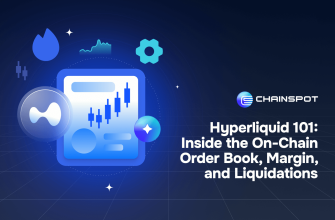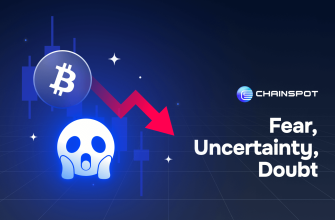- 1. Macro Conditions: The Invisible Weight on Risk Assets
- 1.1. The Fed’s uncertainty turned into volatility compression
- 1.2. Global risk appetite deteriorated
- 1.3. Dollar strength pressured crypto valuations
- 2. Bitcoin: The Market’s Gravity Center Retests Structure
- 2.1. The $98K–102K support zone became the battlefield
- 2.2. BTC dominance continued climbing
- 2.3. The derivatives market remained over-leveraged
- 3. Ethereum: Losing the Relative-Strength Battle
- 3.1. ETH struggled to reclaim any meaningful higher-time-frame level
- 3.2. L2s growing didn’t convert into L1 price growth
- 3.3. Narrative fatigue
- 3.4. As Bitcoin dominance rises, ETH demand dilutes
- 4. Altcoins: A Reality Check
- 4.1. Liquidity dried up across mid-caps and small-caps
- 4.2. Retail disappeared almost entirely
- 4.3. False breakouts were everywhere
- 4.4. Sector-by-sector performance
- 5. Stablecoins: The Smart Money Hid in Cash
- Stablecoin dominance increased.
- 6. Cross-Chain Liquidity: The Market Needed Bridges More Than Ever
- 6.1. Capital moved slower — but more strategically
- 6.2. Liquidity fragmentation increased
- 6.3. The premium for good routing increased
- 7. Sector Rotations: Where Money Actually Flowed
- 7.1. RWA protocols attracted the most consistent inflows
- 7.2. Bitcoin ecosystem plays remained strong
- 7.3. L2 ecosystems: strong fundamentals, weak price action
- 7.4. Gaming tokens lost steam
- 7.5. Solana ecosystem maintained relative strength
- 8. Derivatives Landscape: The Calm Before the Storm
- 8.1. Open interest stayed high during volatility compression
- 8.2. Funding flipped neutral and slightly negative
- 8.3. CVD (Cumulative Volume Delta) showed passive selling
- 9. On-Chain Data: Who Is Accumulating?
- 9.1. Whales accumulated BTC on dips
- 9.2. Mid-size holders sold aggressively
- 9.3. Stablecoin whales increased on-chain balances
- 9.4. Exchange inflows increased slightly
- 10. Chainspot Perspective: Why This Market Favors Agile Tools
- 10.1. Liquidity fragmentation increases the need for cross-chain execution
- 10.2. Traders rotate quickly between ecosystems
- 10.3. Slippage costs become meaningful when volatility is low
- 10.4. Stablecoins on the move = early signs of accumulation
- 10.5. Bots, MEV, and poor routing punish inefficient moves
- 11. What to Expect in the Second Half of November
- Bullish triggers could include:
- Bearish triggers could include:
- Base-case scenario: rangebound continuation
- 12. Bottom Line & Chainspot CTA
- 👉Try Chainspot Router Now — bridge instantly across ecosystems with the best routes and lowest slippage.
- 👉 Chainspot.io — your cross-chain command center for the next market move.
The first half of November delivered exactly the kind of market structure that exposes every weakness in sentiment-driven rallies. After the October drawdown, traders entered this two-week window with mixed expectations: some anticipating a fast recovery from oversold conditions, others bracing for a deeper macro-driven correction. What we got instead was a slow-burning, high-tension environment defined by weakening breadth, rising dominance, selective liquidity, and a return of cautious positioning across nearly all sectors.
This period didn’t bring fireworks — but it brought clarity. The broader crypto market is struggling to establish direction, and while Bitcoin continues to function as the anchor asset, altcoins are losing structure, liquidity is scattering, and macro inputs remain in control. Against this backdrop, cross-chain liquidity tools like Chainspot became even more strategically relevant: the ability to move capital cleanly between chains is becoming a competitive advantage, especially when volatility compresses.
This bi-weekly report breaks down the full picture: macro pressure, Bitcoin’s key retest levels, how altcoins underperformed, liquidity flows, sector rotations, stablecoin changes, futures/derivatives behaviour, and what traders should expect for the second half of November.
1. Macro Conditions: The Invisible Weight on Risk Assets
The tone of the entire crypto market during Nov 1–15 was heavily shaped by macro. Even traders who pretend macro “doesn’t matter” could feel the drag:
1.1. The Fed’s uncertainty turned into volatility compression
Markets had been pricing multiple rate cuts for 2025 earlier in the year, but by early November those expectations were evaporating. Incoming data showed:
-
inflation not falling as quickly as predicted,
-
labour markets still tighter than needed,
-
the Fed signalling “higher-for-longer” rather than “pivot”.
This created the worst environment for risk assets: uncertainty without upside catalysts.
1.2. Global risk appetite deteriorated
Beyond the Fed:
-
ongoing trade tensions,
-
fresh tariff threats between the US and China,
-
recession-leaning data from EU economies,
-
instability in emerging markets,
-
and renewed geopolitical risks
all contributed to a risk-off tone.
Crypto tends to outperform when global liquidity is expanding. During these two weeks, liquidity was contracting.
1.3. Dollar strength pressured crypto valuations
The DXY index strengthened across the period, putting additional pressure on Bitcoin and altcoins. Historically, crypto rallies struggle against a rising dollar, and this time was no different.
2. Bitcoin: The Market’s Gravity Center Retests Structure
Bitcoin spent Nov 1–15 in a tight, heavy range. The price action was classic “post-correction hesitation” where every bounce met selling pressure and every dip revealed thin buyer interest — at least at the mid-range levels.
Let’s break down the key structural observations:
2.1. The $98K–102K support zone became the battlefield
This zone was tested multiple times. Buyers defended it, but the lack of momentum made it clear:
Bitcoin is not trending — it is waiting.
The market wants clarity:
-
a macro catalyst,
-
an ETF inflow surge,
-
an altcoin rotation spark,
-
or some type of narrative oxygen.
Without it, BTC stays pinned.
2.2. BTC dominance continued climbing
During this period, dominance moved upward consistently, signalling:
-
capital retreating to “safer” assets,
-
altcoins bleeding relative value,
-
stablecoin supply slowly expanding,
-
and risk appetite contracting.
Dominance climbing in a stagnant market is a bearish tell for alts — and that perfectly aligns with what we saw across chains.
2.3. The derivatives market remained over-leveraged
Despite volatility compression, open interest stayed high. That’s always a yellow flag:
-
thin liquidity + high leverage → violent squeezes,
-
high OI + declining spot volume → synthetic market risk,
-
funding flipping rapidly → directional confusion.
It’s an environment where whipsaws become the norm.
3. Ethereum: Losing the Relative-Strength Battle
If there’s one theme that defined ETH performance during Nov 1–15, it was underperformance relative to Bitcoin.
Ethereum wasn’t collapsing. It wasn’t in meltdown mode. But its price action told a clear story:
3.1. ETH struggled to reclaim any meaningful higher-time-frame level
Every attempt to break upward was rejected.
3.2. L2s growing didn’t convert into L1 price growth
Even though L2 ecosystems showed strong on-chain activity, capital inflows into ETH itself didn’t follow.
3.3. Narrative fatigue
ETH is missing a clear, loud narrative right now. Staking yield is stable, but not exciting. L2s are expanding, but the value capture remains debated. The “Modular vs Monolithic” debate continues, but it isn’t attracting fresh inflows.
3.4. As Bitcoin dominance rises, ETH demand dilutes
Historically, alt seasons begin when:
-
BTC pumps → cools,
-
flows rotate to ETH,
-
and then to midcaps.
Right now, we’re stuck at step zero.
4. Altcoins: A Reality Check
The altcoin market during Nov 1–15 was defined by three simple dynamics:
4.1. Liquidity dried up across mid-caps and small-caps
Order books thinned, slippage increased, and whales remained absent. Even positive project news had little impact unless it was extremely significant.
4.2. Retail disappeared almost entirely
Retail capital is the oxygen of altcoins. And right now, retail:
-
is scared,
-
is tired,
-
is over-leveraged from earlier losses,
-
is waiting for cheaper entries,
-
or shifted to stablecoins.
Without retail enthusiasm, altcoins suffocate.
4.3. False breakouts were everywhere
Many top-20 and top-50 coins printed:
-
failed breakouts,
-
weak follow-through,
-
low conviction,
-
news pumps with immediate fade.
The environment is hostile to speculative assets.
4.4. Sector-by-sector performance
Layer-1s:
Struggled. No standout performers, no new momentum drivers. Narrative fatigue.
Layer-2s:
Activity strong, token performance weak.
DeFi:
Recovering slowly, but mostly range-bound.
RWAs:
One of the few bright spots — tangible demand, real yields, institutional interest.
AI tokens:
Still narrative-driven, but momentum fading as macro tightens.
Memecoins:
Bleeding heavily — liquidity vanished.
5. Stablecoins: The Smart Money Hid in Cash
One of the clearest signals of the period:
Stablecoin dominance increased.
This always means the same thing:
-
traders are waiting,
-
whales are sidelined,
-
capital is defensive,
-
risk assets are out of favour.
But here’s the nuance:
Stablecoin supply on-chain grew slightly during Nov 1–15.
That means capital is entering crypto — but not deploying yet.
This is a bullish long-term signal masked by short-term fear.
6. Cross-Chain Liquidity: The Market Needed Bridges More Than Ever
During these two weeks, cross-chain behaviour shifted significantly.
6.1. Capital moved slower — but more strategically
Instead of chasing pumps, traders:
-
moved assets into yield-producing chains,
-
rotated into stablecoins and off volatile chains,
-
bridged capital into ecosystems with upcoming events.
6.2. Liquidity fragmentation increased
Different chains had different liquidity conditions:
-
Some L1s dried up completely.
-
Some L2s had pockets of activity.
-
Solana and Base maintained better activity.
-
EVM sidechains weakened.
Because of this, traders needed fast, low-slippage bridging more than ever.
This is exactly the environment where Chainspot becomes a core tool — not optional.
6.3. The premium for good routing increased
A bad bridge choice could cost:
-
1–2% slippage,
-
slow settlement,
-
or exposure to congested lanes.
A smart routing engine saves that cost instantly. Which is why platforms like Chainspot Router gained more visibility during this period.
7. Sector Rotations: Where Money Actually Flowed
Despite the market’s overall choppiness, the period did show some rotational patterns.
7.1. RWA protocols attracted the most consistent inflows
Investors want:
-
stability,
-
yield,
-
and real-world anchors.
In a risk-off market, this sector thrives.
7.2. Bitcoin ecosystem plays remained strong
BRC-20s, Ordinals infrastructure, and BTC-adjacent projects maintained high on-chain activity despite broader market weakness.
The logic is simple:
If Bitcoin is the only thing holding structure, Bitcoin ecosystem assets become natural winners.
7.3. L2 ecosystems: strong fundamentals, weak price action
Users stayed active but token demand stayed flat.
This suggests accumulation zones — but without catalysts, it’s too early to call.
7.4. Gaming tokens lost steam
The narrative is alive, but the money left the room temporarily.
7.5. Solana ecosystem maintained relative strength
Even during these difficult two weeks:
-
Solana’s users stayed active,
-
builders shipped products,
-
on-chain volume held up.
But token prices still struggled — this was a market-wide phenomenon, not chain-specific.
8. Derivatives Landscape: The Calm Before the Storm
Nov 1–15 had one of the strangest derivatives landscapes of the year:
8.1. Open interest stayed high during volatility compression
This creates a coiled-spring effect.
When OI stays elevated while volume drops, the market becomes prone to:
-
massive squeezes,
-
sudden liquidation cascades,
-
violent wick expansions.
We didn’t see the explosion yet — but the pressure built.
8.2. Funding flipped neutral and slightly negative
This suggests that:
-
longs unwound,
-
shorts gained slight dominance,
-
expectations shifted to sideways-down,
-
sentiment cooled.
8.3. CVD (Cumulative Volume Delta) showed passive selling
Market makers weren’t absorbing aggressively. They weren’t dumping either — they were neutral.
This is typical of markets waiting for macro clarity.
9. On-Chain Data: Who Is Accumulating?
On-chain flows revealed a clear pattern:
9.1. Whales accumulated BTC on dips
Their behaviour showed calm confidence.
9.2. Mid-size holders sold aggressively
This reflects stress and deleveraging by retail and smaller traders.
9.3. Stablecoin whales increased on-chain balances
A strong signal that big money is preparing for deployment later — but not yet.
9.4. Exchange inflows increased slightly
That means:
-
traders prepared to sell or reposition,
-
volatility catalysts were anticipated.
10. Chainspot Perspective: Why This Market Favors Agile Tools
Periods like Nov 1–15 create opportunity for traders who can move across chains efficiently.
This is exactly why Chainspot stands out:
10.1. Liquidity fragmentation increases the need for cross-chain execution
No single chain dominates opportunity right now.
10.2. Traders rotate quickly between ecosystems
The ability to bridge in under a minute is a competitive edge.
10.3. Slippage costs become meaningful when volatility is low
Bad bridging = wasted money.
10.4. Stablecoins on the move = early signs of accumulation
Being able to reposition stablecoins across chains is crucial.
10.5. Bots, MEV, and poor routing punish inefficient moves
Smart routing saves pain — Chainspot solves that problem.
In short:
When markets slow down, agility becomes the alpha.
Chainspot gives you that agility.
11. What to Expect in the Second Half of November
Looking ahead, the market sits at a crossroads.
Bullish triggers could include:
-
dovish Fed comments,
-
declines in inflation data,
-
return of ETF inflows,
-
stablecoin supply expanding faster,
-
strong retail re-entry,
-
L2 catalysts or Bitcoin-ecosystem events.
Bearish triggers could include:
-
BTC losing the $98K support,
-
worsening macro data,
-
geopolitical shocks,
-
liquidation cascades,
-
altcoins breaking long-term structure.
Base-case scenario: rangebound continuation
The most likely scenario is:
-
BTC continues tightening between $98K–115K,
-
ETH moves sideways,
-
altcoins remain weak,
-
volatility slowly builds for a larger move.
When the breakout comes — up or down — it will be fast.
12. Bottom Line & Chainspot CTA
The first half of November wasn’t about excitement — it was about information. Markets revealed their internal structure clearly:
-
Bitcoin stable but cautious,
-
altcoins weak,
-
liquidity fragmented,
-
macro still in control,
-
stablecoin accumulation quietly growing,
-
whales preparing positions,
-
derivatives coiling up,
-
cross-chain agility becoming more valuable than ever.
If you want to stay ahead of the next rotation — whether into BTC, ETH, RWAs, L2s, or new ecosystems — you need the ability to move fast across chains.
That’s exactly what Chainspot gives you.












